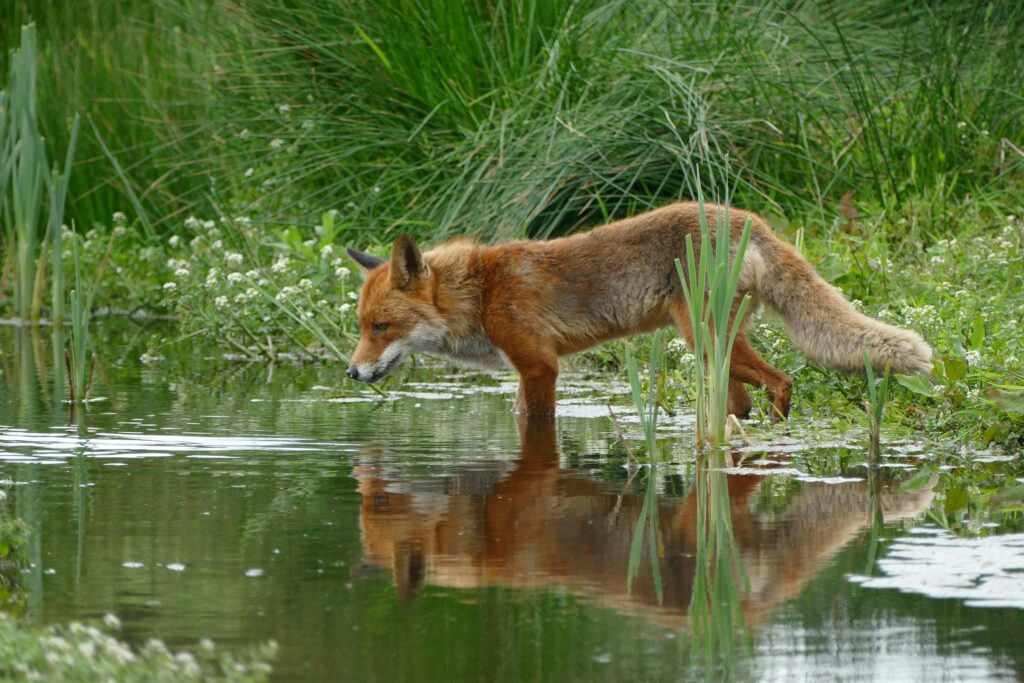Nocturnal animals - who rules the forest when darkness falls?
Have you ever wondered what happens in the forest when darkness falls? Like us humans, do all the animals close their eyes and fall asleep, only to wake up in the morning rested and ready for action? Well, no. In the animal world, night is the time when many species go hunting and look for food. Let's move into the forest and explore the fascinating and mysterious world of nocturnal animals together.
Have you ever wondered what happens in the forest when darkness falls? Like us humans, do all the animals close their eyes and fall asleep, only to wake up in the morning rested and ready for action? Well, no. In the animal world, night is the time when many species go hunting and look for food. Let's move into the forest and explore the fascinating and mysterious world of nocturnal animals together.
Huu-huu! Huu-huu! Did you hear that? Here we rather have no doubt what it was. It was an owl. When we talk about nocturnal animals, most of us will first think: owl! They are one of the best-known nocturnal predators. They have sensational hearing and vision, so they can easily hunt in the dark. One of the most common owl species in Poland is the tawny owl. We can meet it in forests, but also in parks and gardens among trees. We can recognise the presence of tawny owls just by their hooting. It hunts mainly for rodents, birds and insects.
Something flew over our heads. Did you see it? It's another nocturnal predator. A bat is an insectivorous flying mammal. These animals have a highly developed ability to echolocate (or 'see with sounds'). They send out sounds and listen for echoes that bounce off objects in the environment, so they can hunt at night without any problems. The species most commonly found in both Poland and Europe is the late night gloom.

Nocturnal animals in Polish forests: hedgehog, fox and badger
Stomp, stomp, stomp... What's stomping like that? Look down - it's a hedgehog! These small, spiny mammals lead a nocturnal lifestyle. To protect themselves from predators, they curl up in a ball. Their food includes insects, snails and small invertebrates, but also mice and small rodents. Hedgehogs can walk up to 2-3 kilometres in one night in search of food and shelter. The species that can be found in our country are the European hedgehog and the eastern hedgehog.
We can recognise the next nocturnal animal by its long, fluffy kit. Although they lead a nocturnal lifestyle, due to the great difficulty in obtaining food, foxes can also be found in winter during the day. The fox is an omnivorous animal - although meat is their dominant food, they will not disdain plants, fruit, mushrooms, sandwiches (yes, you read that right - after all, for example, jam sandwiches are delicious!), but also carrion. The most recognisable, but also the most common species, is the red fox.
Our final hero is the badger. We can recognise it by the characteristic black or greyish-white stripes on its snout that reach up to the nape of its neck. It is the largest representative of the weasel family in Europe. The badger, like the fox, is omnivorous. Although it feeds largely on invertebrates, it also eats fruit, nuts, plant roots or cereals, among other things. Badgers, like dogs for example, are prone to parasites that inhabit their digestive tracts. Why doesn't anyone go to the vet with them? Well, they deal with the problem themselves. They know how to combine certain plants (including poisonous ones) to get rid of the parasites. Badgers are some of the cleanest animals in the world, so you can expect them to have cleaner in their burrow than you do in your room! The only species living in Poland is the European badger.

The forest - home to many nocturnal animals. Respect it
As you can see, there are indeed many animals that lead active lives while we sleep soundly. In this text, of course, we have not managed to mention all the animals that we can meet during a night walk in the forest. Nocturnal animals have their own superpowers: some have excellent eyesight adapted to seeing in the dark, some have very sensitive hearing that helps them locate their prey and others - like bats - use echolocation. Observing these nocturnal forest dwellers can be extremely interesting, but let's remember that this is their home. Let's respect that and not disturb them.
Pliki do pobrania



